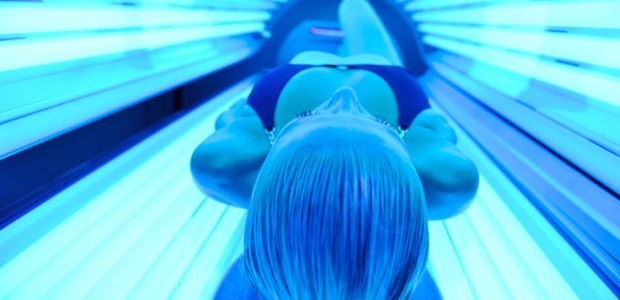Surely most people have heard how the regular use of tanning beds can put them at risk for developing skin cancer. Yet, it seems like plenty of women are still flirting with this danger. A new study suggests that about a quarter of non-hispanic white women (this includes both young adults and girls still in high school) are users of indoor tanning beds. A decision which could come with a hefty price in the long run.
According to specialists from the Center for Disease Control and Prevention (CDC), research has shown that the rate of melanoma has been on the rise within this particular demographic. While not yet proven, some experts suggest that the widespread usage of indoor tanning beds could be playing a role in this.
Earlier Research on Tanning Beds
Previous cancer clinical studies have shown how these indoor tanning devices can increase a person’s risk of developing melanoma by as much as 75 percent if they are younger than 35 years of age. Is having the perfect tan now worth facing such a deadly form of skin cancer down the road?
Prior to this latest study, data on the prevalence of indoor tanning amongst young women was limited. So, specialists from the CDC analyzed data from 2 specific surveys: the 2010 National Health Interview Survey, which looked at adults between the ages of 18 to 34, and the 2011 national Youth Risk Behavior Survey, which looked at students in high school.
Are You a Frequent Indoor Tanner?
For this research, specialists qualified the usage of indoor tanning as having used a device such as a sun bed, lamp, or tanning booth at least one time within the 12 month survey period. Those who used these devices at least 10 times over the course of the previous 12 months were defined as frequent indoor tanners.
Among the surveyed high school-aged women, 29.3 percent had used one of these indoor tanning devices, and 16.7 percent qualified as frequent users over the 12 month survey period. This study also showed that frequency tended to increase with age in this group. However, the data painted a different picture with the other survey group (women aged 18 to 34). About a quarter (24.9 percent) had engaged in indoor tanning during the 12 months, and 15.1 percent qualified as frequent users. It appears that the usage of indoor tanning decreased with age in this group.
U.S. Task Force on UV Exposure
The US Preventive Services Task Force has weighed in on this issue, officially recommending that fair-skinned people between the ages of 10 and 24 should be informed of the risks that come from ultraviolet (UV) exposure. This counseling would include informing them why protection is needed from UV-rays, whether from tanning beds or natural sunlight.
The authors of this study have noted that various intervention practices have proven to be effective at reducing the prevalence of indoor tanning by as much as 35 percent. Beneficial strategies include videos showing photoaging, informative booklets, and peer counseling sessions. Whatever the method, spreading awareness of the dangers of tanning may positively impact the future health of many young women.
